9 start with R start with R
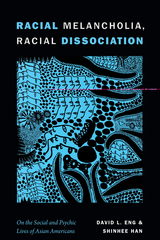
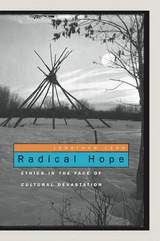
Shortly before he died, Plenty Coups, the last great Chief of the Crow Nation, told his story—up to a certain point. “When the buffalo went away the hearts of my people fell to the ground,” he said, “and they could not lift them up again. After this nothing happened.” It is precisely this point—that of a people faced with the end of their way of life—that prompts the philosophical and ethical inquiry pursued in Radical Hope. In Jonathan Lear’s view, Plenty Coups’s story raises a profound ethical question that transcends his time and challenges us all: how should one face the possibility that one’s culture might collapse?
This is a vulnerability that affects us all—insofar as we are all inhabitants of a civilization, and civilizations are themselves vulnerable to historical forces. How should we live with this vulnerability? Can we make any sense of facing up to such a challenge courageously? Using the available anthropology and history of the Indian tribes during their confinement to reservations, and drawing on philosophy and psychoanalytic theory, Lear explores the story of the Crow Nation at an impasse as it bears upon these questions—and these questions as they bear upon our own place in the world. His book is a deeply revealing, and deeply moving, philosophical inquiry into a peculiar vulnerability that goes to the heart of the human condition.
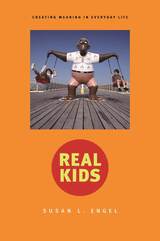
Decades of work in psychology labs have vastly enhanced our knowledge about how children perceive, think, and reason. But it has also encouraged a distorted view of children, argues psychologist Susan Engel in this provocative and passionate book--a view that has affected every parent who has tried to debate with a six-year-old. By focusing on the thinking processes prized by adults, too many expert opinions have rendered children as little adults. What has been lost is what is truly unique and mysterious--the childlike quality of a child's mind.
Engel draws on keen observations and descriptive research to take us into the nearly forgotten, untidy, phantasmagorical world of children's inner lives. She reminds us that children fuse thought and emotion, play and reality; they swing wildly between different ways of interpreting and acting in the world. But just as a gawky child may grow into a beauty, illogical and sometimes maddening childishness can foreshadow great adult ability.
Engel argues that the "scientist in a crib" view encourages parents and teachers to expect more logical reasoning and emotional self-control from children than they possess. She provides a concise and valuable overview of what modern developmental psychologists have learned about children's developing powers of perception and capacity for reasoning, but also suggests new ways of studying children that better capture the truth about their young minds.
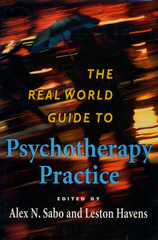
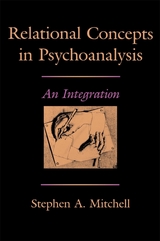
There are more psychoanalytic theories today than anyone knows what to do with, and the heterogeneity and complexity of the entire body of psychoanalytic though have become staggering. In Relational Concepts in Psychoanalysis, Stephen A. Mitchell weaves strands from the principal relational-model traditions (interpersonal psychoanalysis, British school object-relations theories, self psychology, and existential psychoanalysis) into a comprehensive approach to many of the knottiest problems and controversies in theoretical and clinical psychoanalysis.
Mitchell’s earlier book, Object Relations in Psychoanalytic Theory, co-authored with Jay Greenberg, set the stage for this current integration by providing a broad comparative analysis of important thinking on the nature of human relationships. In that classic study Greenberg and Mitchell distinguished between two basic paradigms: the drive model, in which relations with others are generated and shaped by the need for drive gratifications, and various relational models, in which relations themselves are taken as primary and irreducible. In Relational Concepts in Psychoanalysis, Mitchell argues that the drive model has since outlived its usefulness. The relational model, on the other hand, has been developed piecemeal by different authors who rarely acknowledge and explore the commonality of their assumptions or the rich complementarity of their perspectives.
In this bold effort at integrative theorizing, Mitchell draws together major lines of relational-model traditions into a unified framework for psychoanalytic thought, more economical than the anachronistic drive model and more inclusive than any of the singular relational approaches to the core significance of sexuality, the impact of early experience, the relation of the past to the present, the interpenetration of illusion and actuality, the centrality of the will, the repetition of painful experience, the nature of analytic situation, and the process of analytic change. As such, his book will be required reading for psychoanalytic scholars, practitioners, candidates in psychoanalysis, and students in the field.
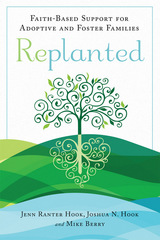
Many people embark on the journey of adoption and foster care but are unprepared for the challenges that await them along the way. Replanted takes an honest look at the joys and hardships that come with choosing this journey and provides a model of faith-based support made up of three parts to help families thrive: Soil, Sunlight, and Water.
- Soil, or emotional support, addresses the need for grace-filled settings where families can connect with other families who understand their experience.
- Sunlight, or informational support, focuses on obtaining helpful training to raise children who may have unique needs or challenges.
- Water, or tangible support, deals with concrete resources such as medical care, child care, and financial support.
Throughout the book, the Replanted model is brought to life by stories and examples based on the clinical work and personal experiences of the authors. Their candid insight will serve families who are actively involved in adoption or foster care, as well as people who are eager to help support those families.
Replanted affirms that with the right support system in place, parents can answer this sacred call not only with open hearts but also with their eyes wide open.

Repossessions was first published in 1998. Minnesota Archive Editions uses digital technology to make long-unavailable books once again accessible, and are published unaltered from the original University of Minnesota Press editions.
A double-edged critical forum, this volume brings early modern culture and psychoanalysis into revisionist dialogue with each other. The authors reflect on how psychoanalysis remains
"possessed" by its incorporation of early modern mythologies, visions, credos, and phantasms. Their essays explore the conceptual and ideological foundations of psychoanalysis while articulating fresh insights into the vicissitudes of autobiography, translation, mourning, and eroticism in the transitional period from the waning of feudalism to the emergence of capitalism.Employing a broad spectrum of the most recent, Continental psychoanalytic approaches, the book covers topics and figures ranging from King James to Leonardo, demonology to cartography, astronomy to cross-dressing, and mythology to biology. Its detailed readings of Boccaccio, Ficino, Finé, Michelangelo, Montaigne, and others dramatically reassess the foundational concepts of cultural history, secularization, autobiography, reason, and government. Through a sustained focus on visual and verbal residues of personal and cultural trauma, the essays generate innovative analyses of the interrelation of writing, graphic space, self, and social identification in early modern texts, paintings, maps, and other artifacts.
Contributors: Elizabeth J. Bellamy, Tom Conley, Mitchell Greenberg, Kathleen Perry Long, Julia Reinhard Lupton, Christopher Pye, Juliana Schiesari.
Timothy Murray is professor of English and director of graduate studies in Film and Video at Cornell University. Alan K. Smith is assistant professor in the Department of Languages and Literature at the University of Utah.
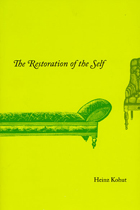
In his foundational work The Restoration of the Self, noted psychoanalyst Heinz Kohut boldly challenges what he called “the limits of classical analytic theory” and the Freudian orthodoxy. Here Kohut proposes a “psychology of the self” as a theory in its own right—one that can stand beside the teachings of Freud and Jung.
Using clinical data, Kohut explores issues such as the role of narcissism in personality, when a patient can be considered cured, and the oversimplifications and social biases that unduly influenced Freudian thought. This volume puts forth some of Kohut’s most influential ideas on achieving emotional health through a balanced, creative, and joyful sense of self.
"Kohut speaks clearly from his identity as a psychoanalyst-healer, showing that he is more of a psychoanalyst than most, and yet calling for major theoretical revisions including a redefinition of the essence of psychoanalysis.”—American Journal of Psychotherapy

As psychoanalysis approaches its second century, it seems no closer to being a science than when Freud first invented the discipline. All the clinical experience of the past hundred years, Donald Spence tells us in this trenchant book, has not overcome a tendency to decouple theory from evidence. Deprived of its observational base, theory operates more like shared fantasy. In support of this provocative claim, Spence mounts a powerful critique of the way psychoanalysis functions—as a clinical method and as a scholarly discipline or “science.” In the process, he prescribes an antidote for the uncontrolled rhetoric that currently governs psychoanalytic practice.
The reliance on rhetoric is the problem Spence identifies, and he attributes the troubling lack of progress in psychoanalysis to its outmoded method of data collection and its preference for fanciful argument over hard fact. Writing to Jung in 1911, Freud admitted that he “was not at all cut out to be an inductive researcher—I was entirely meant for intuition.” His intuitive approach led him to retreat form traditional Baconian principles of inductive investigation and to move toward a more Aristotelian approach that emphasized choice specimens and favorite examples, played down replication, and depended on arguments based on authority. Detailing this development, with particular attention to the role of self-analysis in the Freudian myth and the evidential drawbacks of the case study genre, Spence shows how psychoanalysis was set on its present course and how rhetorical maneuvers have taken the place of evidence.
With this diagnosis, Spence offers a remedy—an example of the sort of empirical research that can transform clinical wisdom into useful knowledge. His book holds out the hope that, by challenging the traditions and diminishing the power rhetoric, psychoanalysis can remain a creative enterprise, but one based on a solid scientific foundation.
READERS
Browse our collection.
PUBLISHERS
See BiblioVault's publisher services.
STUDENT SERVICES
Files for college accessibility offices.
UChicago Accessibility Resources
home | accessibility | search | about | contact us
BiblioVault ® 2001 - 2024
The University of Chicago Press









